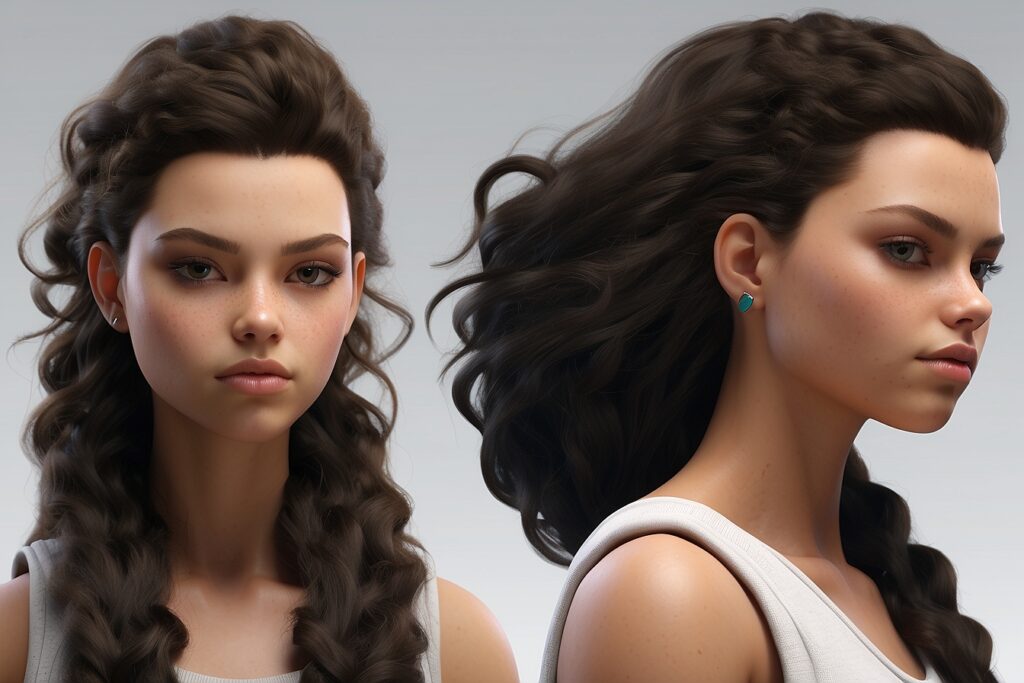Using XGen in Maya for character grooming and integrating these assets into Unreal Engine is a sophisticated process that offers unparalleled control and realism for digital character creation, especially when it comes to hair, fur, and other fibrous textures. The combination of Maya’s powerful grooming tools and Unreal Engine’s real-time rendering capabilities allows for the creation of highly detailed and dynamic characters suitable for games, film, and VR experiences. Here’s a detailed exploration of why and how to use XGen in Maya for character grooming, along with its integration into Unreal Engine.

The Advantages of XGen in Maya for Character Grooming
1. Highly Customizable Grooming Tools:
XGen offers an extensive set of grooming tools that enable artists to create complex hair and fur styles with a high degree of control. From short stubble to flowing locks or even fantastical fur, XGen can handle it all with precision.
2. Dynamic and Realistic Results:
The procedural nature of XGen allows for the creation of hair and fur that reacts realistically to the character’s movements and environmental factors, enhancing the overall believability of the character.
3. Scalability for Detailed Projects:
XGen is designed to efficiently manage large numbers of fibers, making it suitable for characters that require highly detailed grooming, such as animals with thick fur or characters with intricate hairstyles.
Integrating XGen Groomed Characters into Unreal Engine
1. Creating the Groom in Maya:
Begin by using XGen to create the desired hair or fur on your character in Maya. Utilize the grooming tools to style and shape the groom to match your character’s design, keeping in mind the final look you aim to achieve in Unreal Engine.
2. Preparing for Export:
Once your grooming is complete, the next step is to prepare the groom for export to Unreal Engine. This usually involves converting the groom into a format that is compatible with Unreal, such as using the “Groom Bake” feature in Maya, which can convert the groom into splines or geometry that Unreal Engine can interpret.
3. Importing into Unreal Engine:
After exporting your groom from Maya, import it into Unreal Engine. Unreal Engine 4.24 and later versions support importing hair and fur grooms directly through the Alembic file format or as part of an FBX file. Utilize Unreal Engine’s Groom Importer to bring in the XGen groom, ensuring to adjust the material settings to achieve the desired look under various lighting conditions.
4. Utilizing Unreal Engine’s Hair and Fur Rendering:
With the groom imported, leverage Unreal Engine’s hair and fur rendering capabilities to achieve realistic results. This includes setting up physics for dynamic movement, adjusting shading and rendering settings for realism, and applying wind or motion effects for added dynamics.
5. Optimizing for Performance:
Given the high level of detail in XGen grooms, performance optimization is crucial, especially for real-time applications. Use Unreal Engine’s tools to LOD (Level of Detail) models and apply culling techniques to ensure that the groom does not overly tax the engine, maintaining a balance between visual fidelity and performance.
Why It’s Beneficial
The workflow of using XGen in Maya for grooming and integrating these characters into Unreal Engine is beneficial for several reasons:
High-Quality Visuals: It allows for the creation of characters with highly realistic hair and fur, enhancing visual quality and immersion in games and films.
Real-Time Performance: Unreal Engine’s advanced rendering capabilities ensure that even complex grooms can be displayed in real-time, essential for interactive applications.
Creative Flexibility: Artists have the freedom to create a wide range of styles and effects, from realistic human hair to fantastical creatures, without being limited by technical constraints.
In summary, the combination of Maya’s XGen and Unreal Engine provides a robust solution for character grooming, offering the tools necessary for creating, rendering, and optimizing high-quality hair and fur for real-time applications. This workflow not only elevates the visual realism of digital characters but also enhances the overall storytelling and audience engagement in games, movies, and beyond.
